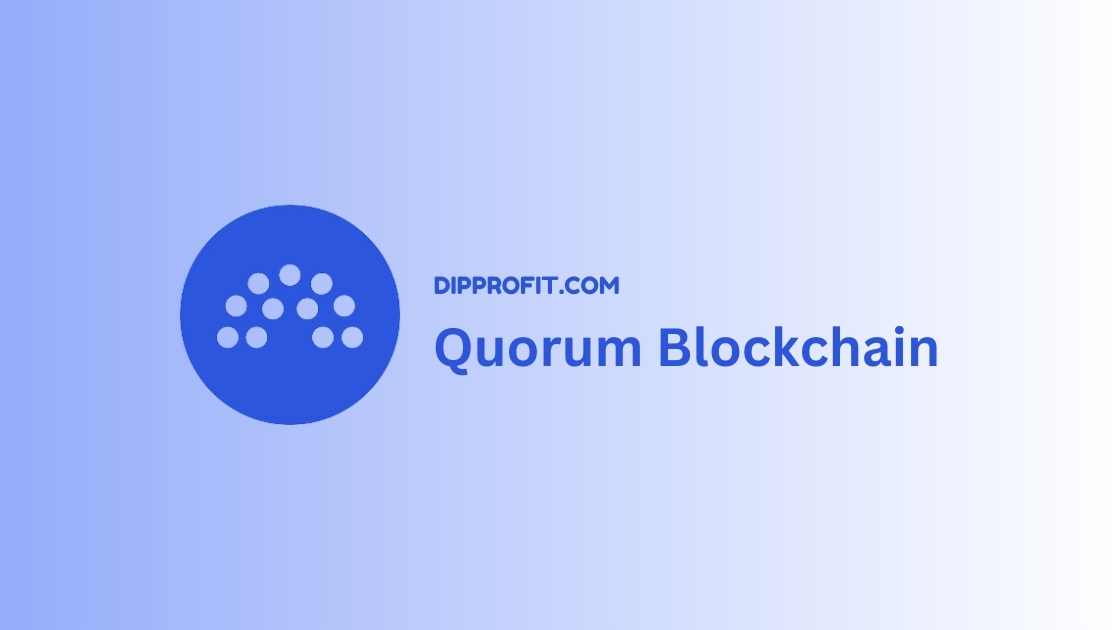
The Blockchain
A blockchain or a distributed ledger is a decentralized and transparent digital ledger that records and verifies transactions across multiple computers without limits to location or users.
There are different blockchains that were developed to ensure security, and transparency by utilizing cryptographic algorithms.
This technology has the potential to revolutionize various industries by eliminating the need for intermediaries and enabling trustless peer-to-peer transactions.
Some include Bitcoin, Ethereum, Corda, Stellar, Ripple, Avax, and Quorum. In this blog post, we’ll be taking a look at Quorum and why it is a private enclosed blockchain.
Quorum
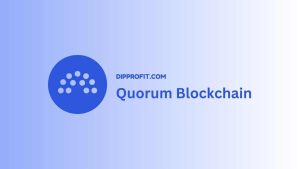
Quorum Blockchain was a recent distributed ledger system developed by JP Morgan. The project was open-sourced in November 2016, allowing other organizations to benefit from its innovative features.
The blockchain is based on a cutoff of the very familiar blockchain called Ethereum.
Quorum is one of the very much private ledger systems that are being used today. Some other private distributed ledger technologies include Corda and Hyperledger.
A private blockchain or a permissioned blockchain is a distributed ledger system primarily used in cases like supply chain management. This private system allows data recorded on it only to be available to the participants in a closed ecosystem.
Also, with private blockchains like the quorum blockchain, the decentralization of data on it is up to the companies running and configuring the information stored on it.
See also: Breaking: JPMorgan Bank and Lounges enter the Metaverse
I know it sounds blockchain unrelated since there is no privacy or anonymity but later in the rest of this post, I’ll be revealing the reasons why there is no privacy or anonymity in these private blockchains.
But for now, the focus is on Quorum.
Quorum blockchain was not built from scratch like other blockchains, instead, it was built by JP Morgan off the base code of the Ethereum Blockchain which makes it a subsequent upgrade to the ETH blockchain.
Furthermore, this blockchain was built for businesses and large-scale institutions that would prefer to use a decentralized ledger but in private, and access to other bodies on this blockchain mostly includes regulatory bodies and law enforcement.
Advantages of Quorum Blockchain
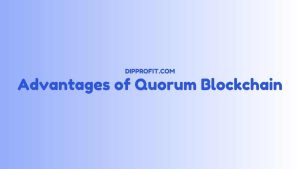
Enhanced Transaction Privacy
One of the key advantages of Quorum blockchain is its advanced transaction privacy features.
In many business scenarios, maintaining confidentiality is crucial. Quorum offers the ability to create private transactions and smart contracts, ensuring that sensitive business information is shared only among authorized participants.
This feature is particularly valuable in industries where privacy and data protection are paramount, such as finance and healthcare.
High Scalability
Quorum addresses the scalability challenges faced by many blockchain platforms, including Ethereum.
By operating a consensus mechanism based on majority voting, Quorum achieves high transaction throughput, allowing for a larger number of transactions to be processed per second.
This ability is important for enterprise applications that require fast processing with small amounts of time.
Consensus Mechanism
The Quorum blockchain also employs a consensus mechanism known as proof-of-authority (PoA), where a set of pre-approved network participants validate transactions.
This algorithm ensures faster block confirmation times compared to traditional mechanisms. As a result, Quorum achieves faster consensus and improves the overall efficiency of the blockchain network.
Permissioned Network
Unlike public blockchains, Quorum blockchain is a permissioned blockchain platform. This means that access to the network and participation in consensus are restricted to authorized participants.
Permissioned networks provide better control and governance for businesses, allowing them to meet regulatory requirements and ensure compliance while leveraging the benefits of blockchain technology.
Interconnect-ability with Ethereum (ETH)
Quorum is built on the Ethereum network, which allows for seamless interoperability with the Ethereum ecosystem.
Smart contracts and applications developed for Ethereum can easily be deployed on Quorum, providing businesses with the flexibility to leverage existing Ethereum tools and infrastructure. This advantage alone opens up a large basket full of benefits for companies looking to integrate blockchain technology into their existing systems.
What Programming Language is Quorum Blockchain?
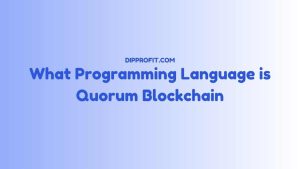
The Quorum Blockchain is written in a programming language called Go (Golang).
Quorum also combines elements of Solidity, the programming language used for developing smart contracts on the Ethereum platform.
Go (Golang) is a statically typed, compiled language known for its efficiency, simplicity, and strong support for concurrent programming. It was developed by Google and has gained popularity among developers for its speed and ease of use.
This is major for developers who are looking to leverage their existing knowledge of Solidity when building decentralized applications (dApps) on the Quorum blockchain.
See also: How to Become a Web3 Developer: A Comprehensive Guide
Quorum vs Other Blockchain Platforms
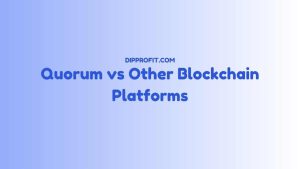
Note that the blockchain platforms mentioned here have different design goals and are optimized for various use cases.
Choosing the most suitable platform comes down to meeting the specific requirements of your project or organization.
Ethereum is one of the most widely used blockchain platforms. It supports the development of smart contracts and decentralized applications (dApps). It also uses the POS mechanism that uses a lot of power to compute.
While HyperLedger Fabric is another blockchain platform created by Linux foundations and uses a different consensus to Quorum’s.
Comparisons with Ethereum, HyperLedger, and Corda

Privacy
Quorum and Corda offer advanced privacy features, such as the ability to keep transaction details confidential among specific participants. Ethereum and Hyperledger Fabric, on the other hand, have more transparent and public networks.
Consensus Mechanism
Quorum and Ethereum currently use a proof-of-authority (PoA) consensus mechanism, while Hyperledger Fabric and Corda support pluggable consensus algorithms, allowing organizations to choose the most suitable consensus mechanism for their specific use cases.
Scalability
Hyperledger Fabric and Corda have built-in mechanisms to scale the blockchain network, making them more suitable for enterprise-level applications. Ethereum and Quorum have faced scalability challenges due to the limitations of their consensus mechanisms.
Adoption
Ethereum has the largest developer community and a wide range of decentralized applications and tokens built on its platform. Hyperledger Fabric has gained traction in various industries, including finance and supply chain. Quorum and Corda have found adoption mainly in the financial sector.
Public vs Private Blockchains
Public blockchains are decentralized networks where anyone can join and participate in the network. They are open to the public and do not have any restrictions on who can access or validate transactions.
The most notable example of a public blockchain is Bitcoin(BTC).
Public blockchains typically rely on POW consensus to validate and add new blocks to the blockchain although most of them are now recently been developed with POS mechanisms.
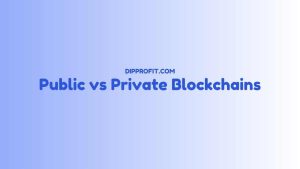
Private blockchains, also known as permissioned blockchains, are restricted networks where access and participation are controlled by a consortium centralized entity.
These blockchains are commonly used within organizations or specific industry sectors to simplify operations, improve efficiency, and enforce certain governance rules. They often require participants to have permission or be approved by the governing entity to join the network and validate transactions.
Examples of private blockchains include Hyperledger Fabric and Quorum.
Summary
Although the Quorum blockchain has been sold to Consensys by JP Morgan in 2018, the blockchain is still dormant and hasn’t been implemented in many companies.
Under ConsenSys, Quorum has continued to thrive as an open-source blockchain platform. The collaboration with ConsenSys, a prominent blockchain software company, has brought additional expertise, resources, and community support to further enhance the capabilities of Quorum.